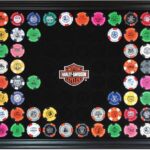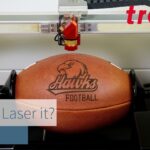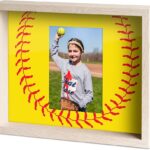I. Introduction to 3D Printing and CNC in Motorcycle Restoration
II. Advantages of Using 3D Printing and CNC in Reviving Classic Motorcycles
III. Steps to Utilize 3D Printing and CNC in Restoring Classic Motorcycles
IV. Examples of Successfully Revived Classic Motorcycles Using 3D Printing and CNC Technology
Introduction to 3D Printing and CNC in Motorcycle Restoration
Picture this: you stumble upon a dusty old classic motorcycle in a garage, hidden away for years, waiting to be brought back to life. The thought of restoring it to its former glory is exciting, but where do you even begin? This is where 3D printing and CNC technology come into play, revolutionizing the way we approach motorcycle restoration.
3D printing, also known as additive manufacturing, allows you to create three-dimensional objects by layering materials on top of each other based on a digital design. On the other hand, CNC (Computer Numerical Control) machining involves using computer-controlled machines to precisely cut and shape materials into intricate designs. When combined, these technologies open up a world of possibilities for reviving classic motorcycles.
Whether you’re a seasoned motorcycle enthusiast or a novice looking to embark on a restoration project, understanding how 3D printing and CNC can be utilized in motorcycle restoration is key to achieving outstanding results. Let’s dive into the advantages and steps to harness this cutting-edge technology in bringing old bikes back to life.
Advantages of Using 3D Printing and CNC in Reviving Classic Motorcycles
So, you’ve got an old classic motorcycle that you’re itching to bring back to life. You’ve got the passion, the vision, and the determination to make it happen. But have you considered the incredible benefits that 3D printing and CNC technology can offer in your restoration project?
Let me tell you, these cutting-edge technologies can take your motorcycle restoration to a whole new level. Here are some of the advantages of using 3D printing and CNC in reviving classic motorcycles:
- Precision and Accuracy: One of the biggest advantages of 3D printing and CNC is the level of precision and accuracy they offer. With these technologies, you can create intricate and complex parts with incredible detail, ensuring a perfect fit for your classic motorcycle.
- Customization: Want to add a personalized touch to your classic motorcycle? With 3D printing and CNC, the possibilities are endless. You can easily create custom parts and accessories that reflect your unique style and taste.
- Time and Cost Savings: Traditional methods of manufacturing parts for classic motorcycles can be time-consuming and expensive. With 3D printing and CNC, you can quickly produce parts on demand, saving you both time and money in the restoration process.
- Availability of Rare Parts: Finding rare or obsolete parts for classic motorcycles can be a challenge. With 3D printing, you can easily reproduce these parts without the need for extensive searching or costly reproduction processes.
- Experimentation and Innovation: 3D printing and CNC technology open up a world of possibilities for experimentation and innovation in motorcycle restoration. You can test new designs, materials, and techniques to push the boundaries of what’s possible in classic motorcycle restoration.
So, if you’re looking to breathe new life into your classic motorcycle, consider harnessing the power of 3D printing and CNC technology. Not only will you enhance the quality and authenticity of your restoration project, but you’ll also have the opportunity to unleash your creativity and passion in ways you never thought possible.
Steps to Utilize 3D Printing and CNC in Restoring Classic Motorcycles
Reviving a classic motorcycle is a labor of love, but with the advancements in technology like 3D printing and CNC machining, the process has become more efficient and precise. Here are some steps to help you utilize these technologies in restoring your vintage bike.
- Research and Design: Before diving into the restoration process, it’s essential to research and gather all the necessary information about your motorcycle model. Utilize design software to create detailed 3D models of the parts that need to be replaced or repaired. This will ensure accuracy and compatibility during the production phase.
- Choose the Right Materials: When using 3D printing for motorcycle restoration, selecting the appropriate materials is crucial. Ensure that the materials you choose are durable, heat-resistant, and suitable for the specific part you are creating. CNC machining also requires selecting the right type of metal or plastic for optimal results.
- Prototyping and Testing: Once you have designed the parts, it’s important to create prototypes using 3D printing to test the fit and functionality. This step allows you to make any necessary adjustments before moving forward with the final production. CNC machining can also be used for creating prototypes with precision.
- Production and Finishing: After finalizing the designs and prototypes, it’s time to move on to the production phase. Utilize 3D printing for creating intricate and complex parts, while CNC machining can be used for more robust components. Once the parts are produced, don’t forget to finish them with the appropriate coatings or treatments for longevity.
- Assembly and Installation: As you receive the 3D printed and CNC machined parts, it’s time to assemble them onto your motorcycle. Take your time during this step to ensure that everything fits perfectly and functions as intended. Seek professional help if needed to ensure proper installation.
- Testing and Quality Control: Before taking your revived classic motorcycle for a spin, it’s crucial to test every part thoroughly. Check for any defects, misalignments, or malfunctions to address them before hitting the road. Conduct quality control checks to ensure that the restored bike meets safety standards.
- Enjoy the Ride: Once you have successfully utilized 3D printing and CNC in restoring your classic motorcycle, it’s time to hit the road and enjoy the fruits of your labor. Take pride in the fact that you have preserved a piece of history while embracing modern technology.
By following these steps and utilizing 3D printing and CNC technology in your motorcycle restoration project, you can achieve a level of precision and quality that was once unimaginable. Embrace the future while honoring the past, and you’ll have a beautifully restored classic bike that turns heads wherever you go.
Examples of Successfully Revived Classic Motorcycles Using 3D Printing and CNC Technology
Reviving classic motorcycles using 3D printing and CNC technology has become a game-changer in the world of motorcycle restoration. By utilizing these advanced techniques, enthusiasts and professionals alike have been able to breathe new life into vintage bikes that were once considered beyond repair. Let’s take a look at some inspiring examples of classic motorcycles that have been successfully restored using these cutting-edge technologies.
1. The Yamaha XS650 Cafe Racer
One iconic example of a classic motorcycle that has been brought back to its former glory is the Yamaha XS650 Cafe Racer. By combining traditional craftsmanship with modern technology, the restoration team was able to recreate missing or damaged parts using 3D printing and CNC machining. This resulted in a stunning transformation that stayed true to the bike’s original design while enhancing its performance and aesthetics.
2. The Harley-Davidson Sportster Ironhead
Another impressive restoration project that showcases the power of 3D printing and CNC technology is the revival of the Harley-Davidson Sportster Ironhead. By creating custom parts and components with precision using these advanced methods, the restoration team was able to elevate the bike’s performance and overall look. The result was a classic motorcycle that not only looked incredible but also rode like a dream.
3. The Triumph Bonneville T120
The Triumph Bonneville T120 is yet another classic motorcycle that has been successfully revived using 3D printing and CNC technology. By leveraging these innovative tools, the restoration team was able to recreate intricate details and components that were no longer available. The end result was a beautifully restored bike that retained its vintage charm while boasting enhanced functionality and durability.
4. The Honda CB750 Four
One of the most iconic motorcycles of all time, the Honda CB750 Four, has also seen a resurgence thanks to 3D printing and CNC technology. By manufacturing custom parts and accessories with precision and accuracy, the restoration team was able to bring this legendary bike back to life in all its glory. The combination of traditional craftsmanship and modern techniques resulted in a truly remarkable restoration that captivated enthusiasts around the world.
These examples serve as a testament to the incredible potential of 3D printing and CNC technology in the realm of motorcycle restoration. By embracing these advanced methods, enthusiasts and professionals alike can breathe new life into classic bikes and preserve their legacy for generations to come. So, whether you’re a seasoned restorer or a passionate enthusiast, don’t hesitate to explore the possibilities that these cutting-edge technologies have to offer. Who knows? Your next restoration project could be the talk of the town!










Comments